Planifica mejor tus rutas en LATAM

Plan and optimize your routes in seconds.
tus rutas en segundos





















Automate all your last-mile processes
You'll have all the parameters you need to give you the best results instantly.
Finally a simple planner that you can use today.
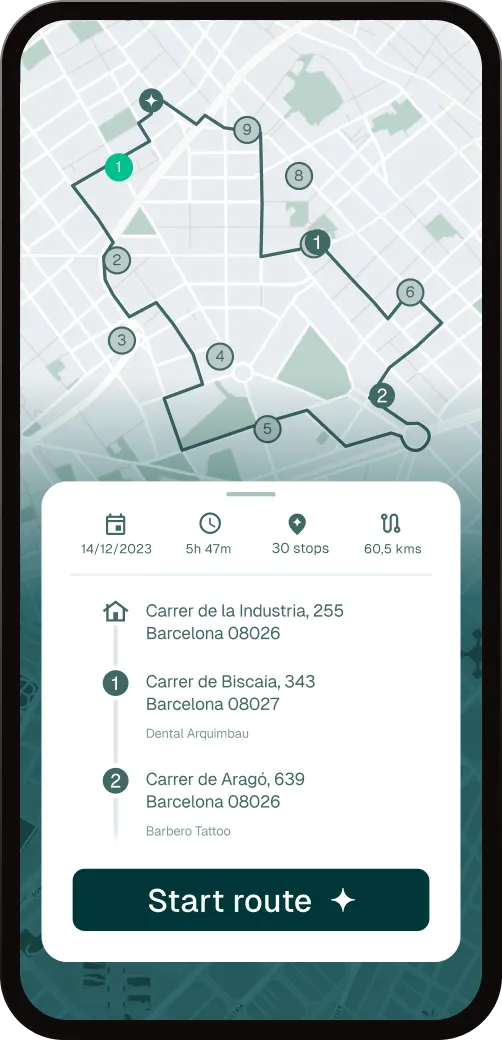
The drivers they only need a cell phone and internet access.
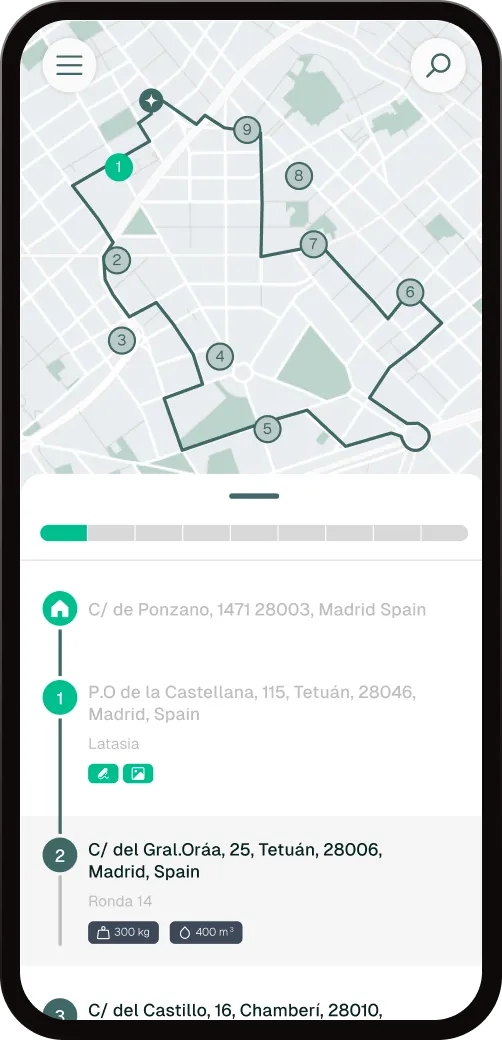
Raise the customer experience.
Precise updates.
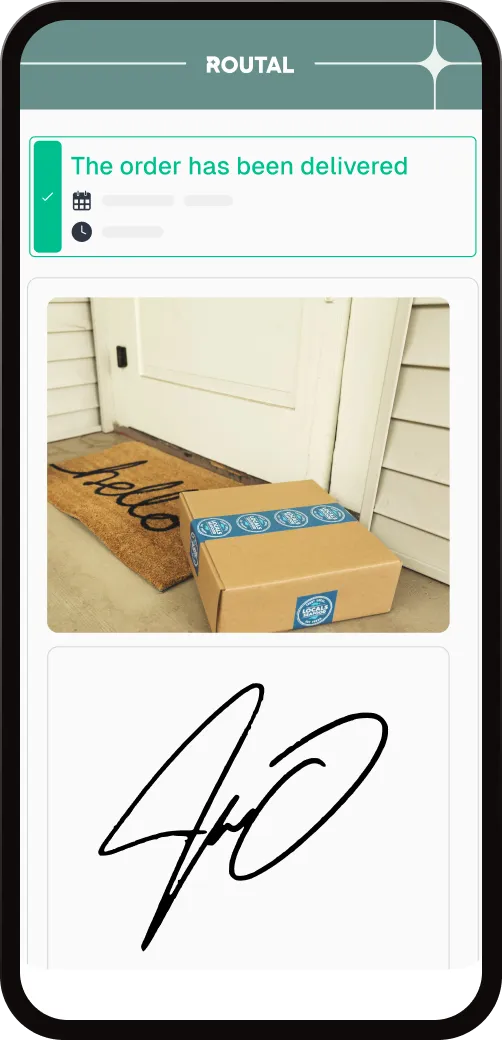

We help large and small companies in . Thank you!














Optimize your routes in 3 clicks
Success stories, transformative results.
Our latest news and industry know-how.
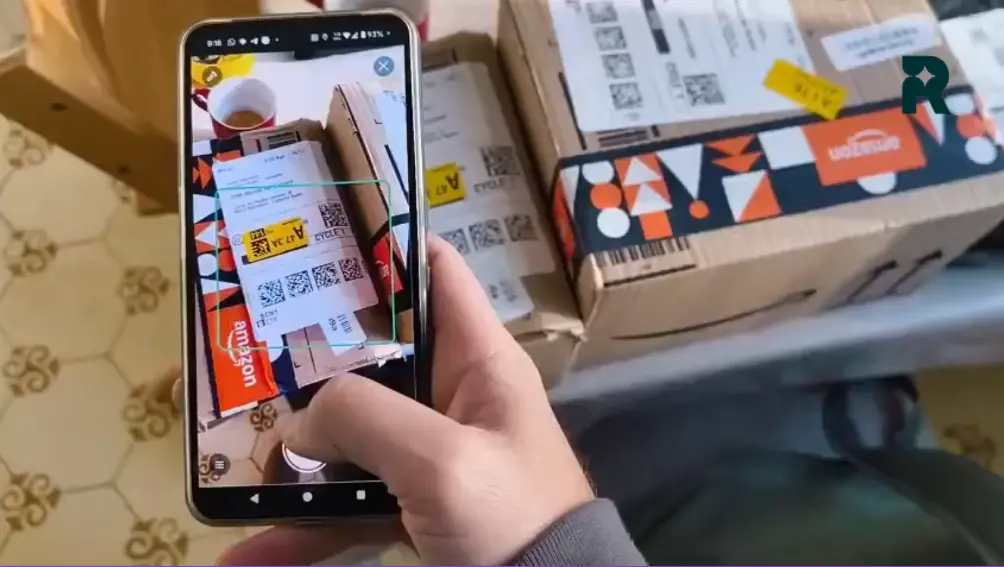
The peak season is here: Black Friday, Christmas, sales... and you with your van full to the top and the clock ticking.
The last thing you want is to spend 30—40 minutes organizing stops, reading directions, and fighting with Google Maps.
That's why in Routal for Drivers we have launched a novelty designed just for that moment of chaos:
👉 route planning simply by taking pictures of package labels.
Yes, literally like this: You take out your cell phone, point to the label, click... and in less than 1 second that package is already on your optimized route.
How does photo planning work?
The idea is very simple: you focus on the packages, Routal does the rest.
- Open the Routal for Drivers app.
- Activate the “scan by photo” mode.
- You're taking pictures of the labels, one after the other (without having to frame perfectly or waste time).
- The app automatically reads relevant information (address, reference, etc.).
- When you're done, Routal Generate the optimal route in seconds, sorting all the stops by distance, times and priorities.
💡 The result:
- Less than 1 second per package to incorporate it into your route.
- Without typing directions nor search manually on the map.
- Todo ready to start much earlier.
.webp)
.webp)
Up to 30% less time spent planning 🕒
With this new flow, many delivery people are seeing something very clear:
- Before:
- 20—40 minutes organizing the route by hand.
- A lot of time looking at papers, different apps and doing mental calculations.
- Now with Routal for Drivers:
- You scan packages at full speed (less than 1 second per tag).
- The app It gives you back the best route in a few seconds.
- The total preparation time may go down up to 30%.
What does that translate to for you?
- Get home early.
- Less stress at the start of the day.
- More time for what matters (or even to do more services, if you want).
Less gas, fewer laps, less stress ⛽
It's not just a matter of speed. With a well-optimized route:
- You do fewer useless kilometers.
- You avoid “crossing the city” several times.
- Reduces Gasoline consumption or diesel.
- And, by the way, You pollute less.
The app calculates the optimal route taking into account distances and sequence of stops, so that the route is as efficient as possible. You just follow the order set by the app and focus on delivering.
Ideal for the peak season: Black Friday, Christmas, sales... 🎁
If there's a time in the year when this functionality shines, it's now:
- When you go from 50 to 120+ packs in one day.
- When every minute counts and you go just in hours.
- When customers are more sensitive to delivery schedules.
In the middle of the campaign of Black Friday and Yule, the difference between 30 minutes organizing packages... or having the route ready in a matter of seconds is enormous.
With photo planning in Routal for Drivers:
- You start delivering sooner.
- You make better use of each time slot.
- They reduce delays due to poorly organized routes.
It works all over the world 🌍
The app of Routal for Drivers is designed for delivery people who work:
- In big cities or small towns.
- In Spain, Europe, Latin America or any other market.
As long as you have packages with legible labels and a connection to synchronize, you can:
- Scan,
- Plan,
- And go out to deliver
- wherever you are.
Hundreds of autonomous delivery people already use it every day
This is not “laboratory” functionality.
Hundreds of autonomous delivery people they are already using Routal for Drivers in their daily lives to:
- Organize your routes without wasting time.
- Reduce downtime at the start of the day.
- Improve your billing without lengthening your day so much.
And not just freelancers. Routal technology It is part of the daily operations of many delivery people from well-known companies such as: Seur, Correos, GLS, DHL, J&T Express or UPS ... among many others who already rely on our solutions to plan, optimize and monitor their routes.
Do you want to try it out in your next cast?
If you are a self-employed delivery person, work for a courier company or manage a small fleet, the new planning by label photos in Routal for Drivers It can change your day:
- 📸 You take pictures of the labels.
- 🧠 Routal understands and organizes.
- 🗺️ You have the best route ready in seconds.
- 🕓 You save up to 30% of the time you previously spent planning.
- 🏠 And yes, Do you get home early.
%20(22).webp)
In core markets—where competition is fierce, margins are tight and punctuality is everything— having a well-oiled logistics operation is no longer a competitive advantage. It's a necessity.
In this article, we'll tell you why efficient route planning, together with the standardization of distribution processes, can make a difference for your business. Especially if you operate in areas of high density and demand such as wholesale markets, urban distribution centers or industrial areas.
1. Maximizes operational efficiency (and reduces costs)
With good route planning, you can significantly reduce kilometers traveled, fuel consumption and road time. Not only does this lower costs, it also improves the lifespan of your fleet and reduces stress on the delivery team.
The standardization of processes helps each order to be managed in the same way, reducing errors and improvisations and wasted time in daily operations.
2. Faster and more accurate delivery
When each route is optimized and each step of the distribution process is clearly defined, delivery times are shortened and customers receive exactly what they expect. Deliveries in a timely manner.
This is essential in core markets where customers expect agile logistics, with very tight time windows, because their business, mainly hospitality, depends on it.
3. Greater control and visibility in real time
Technology such as Routal allows for minute-by-minute monitoring of each delivery. An urgent order? A customer who changes address at the last minute? With full visibility, you can react in time.
In addition, having standardized processes makes it easier to analyze key metrics: delivery time, route efficiency, level of customer satisfaction, etc.
4. Better customer experience (and greater loyalty)
Efficient logistics can't just be seen in the numbers, it's also felt in the experience. Customers who receive their products on time, informed and with the option to give feedback, are happier... and more loyal customers.
Our studies show an increase of almost 20% in retention a few months after implementing the solution. We have even been able to see comments from satisfied customers due to the improved level of service.
5. Scalability without chaos
When you standardize your processes and use planning tools like Routal, scaling your operation—more zones, more vehicles, more customers—is much easier. Everything is supported by a system that already works.
The balance lies in defining a single way of working and letting experience make those small quality decisions that make them essential in their position. But that without them, the company can continue to operate efficiently.
In short: Efficiency and consistency, the secret of winners
Whether you operate in central markets, or in any type of capillary distribution operation, you cannot leave logistics to chance, not even in the hands of a single person.
The combination of well-planned routes and well-defined processes allows you to operate efficiently, provide better service and grow while maintaining a predictable level of service.
Do you want to see how Routal can help you transform your distribution? Request a demo and start optimizing your operation today.
%20(12).webp)
At Routal we are very proud to announce that we have been awarded the award Top Performer Fall 2025 Of SourceForge , the world's largest B2B software review and comparison platform, attracting nearly 20 million software buyers every month.
This recognition highlights products with a high volume of recent and excellent user reviews, placing them in the top 10% of the best rated products from among more than 100,000 tools evaluated on the platform.
“We're excited to announce the exceptional Top Performers of this fall of 2025,” says Logan Abbott, president of SourceForge. “Routal has proven to be highly valued by its users, as reflected in the large number of outstanding reviews it has received.”
This award is even more special for us because We have already been recognized as Top Performers for eight consecutive quarters. Eight times in a row on the podium. Eight quarters in which our users have confirmed, with their feedback, that we are on the right track.
“At Routal, we are thrilled to receive this recognition from SourceForge once again. We work every day to provide a robust, intuitive and powerful platform that makes it easy to plan, optimize and track last-mile deliveries. That our users rate it with so many positive reviews is the best reward,” says our management team.
This award belongs to all of you: our users, who use Routal to design efficient routes, improve delivery times and provide a memorable customer experience.
Thank you for trusting Routal! We continue to work to offer the best in every delivery.










.webp)










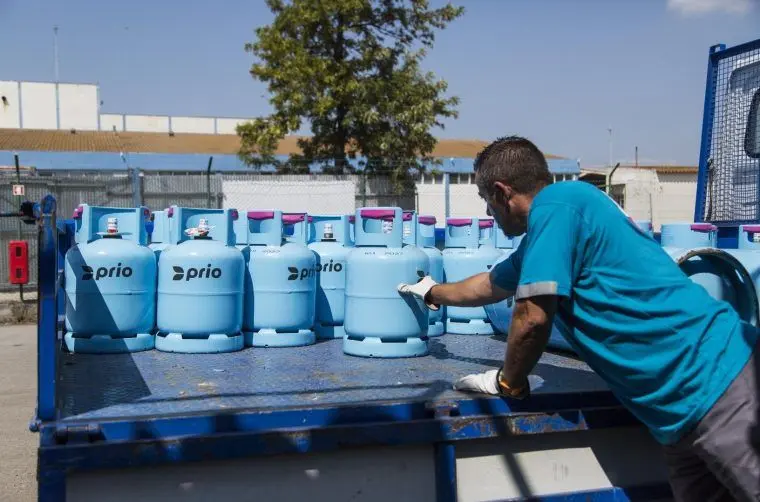











.png)
